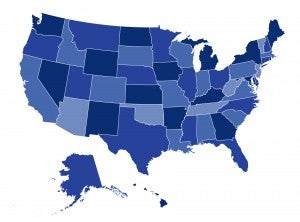Factors Affecting Health Insurance Enrollment Through the State Marketplaces: Observations on the ACA’s Third Open Enrollment Period

Despite declining funding, enrollment through the state-based marketplaces increased nearly nine percent during the third open enrollment period. To learn what assistance and outreach strategies were most effective in attracting consumers, we surveyed marketplace officials to gain their unique insights and share major findings in our latest report.




